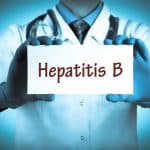Wine and Liver Health
A little wine can be beneficial to liver, UCSD research finds
By Cheryl Clark
UNION-TRIBUNE STAFF WRITER
www.signonsandiego.com
May 22, 2008
Alcohol and your liver: not a happy couple, right?
Well, not exactly. A new UCSD study challenges conventional wisdom by suggesting one small glass of wine a day can reduce the risk of early-stage liver disease by one-half compared with drinking no alcohol.
People who drank beer or hard liquor, though, had more than four times the odds of getting fatty liver disease.
“This is a whole paradigm shift in our way of thinking about this disease,” said Dr. Jeffrey Schwimmer, a UCSD liver disease expert who admits to drinking more wine now – preferably red – than before he conducted this study.
Moderate wine drinking previously has been linked with protecting the heart. Now, Schwimmer said, “if one is going to use alcohol in a modest fashion for heart protection, this study suggests wine is not only safe for the liver, but may in fact be beneficial.”
Schwimmer’s study does not explain exactly how wine protects the liver, but he suggested in an interview that the benefit might come from an ingredient in wine called resveratrol, or from a process related to the fermentation of grapes.
His report is published in the current issue of the journal Hepatology and was funded by divisions of the National Institutes of Health.
The condition Schwimmer studies is called non-alcoholic fatty liver disease, a condition found in 20 percent of adults, even those who drink little alcohol. The condition has no symptoms, but can be diagnosed when the liver has around 5 percent abnormal fat deposits. The normal amount is 1 percent.
In a quarter of those with fatty liver disease, the condition worsens to hepatitis or liver inflammation. And in 10 to 20 percent of those with hepatitis, scarring associated with cirrhosis occurs.
Before one rushes to the discount wine store, the study has several caveats. For starters, one must limit consumption to only 4 ounces a day, a little more than two shots’ worth.
Second, people who already have liver disease should avoid alcohol at all costs.
Third, the study does not suggest that drinking more than 4 ounces further reduces the chance of liver disease. In fact, for most people, drinking more alcohol could raise the risk of other illnesses, such as cirrhosis of the liver and heart disease.
Schwimmer’s study also is vulnerable to reporting error. It was based on examination of answers given to researchers between 1988 and 1994 by 15,000 adult Americans who had undergone a liver enzyme blood test called ALT.
ALT is not as accurate as liver biopsies in diagnosing fat in the liver, he acknowledged.
“Now we need to take the next step,” Schwimmer said. He plans to study people who have more symptomatic liver disease, including hepatitis or cirrhosis, not linked to heavy use of alcohol.







